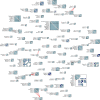A systematic literature review of requirements engineering education
- PMID: 35611156
- PMCID: PMC9119682
- DOI: 10.1007/s00766-022-00381-9
A systematic literature review of requirements engineering education
Abstract
Requirements engineering (RE) has established itself as a core software engineering discipline. It is well acknowledged that good RE leads to higher quality software and considerably reduces the risk of failure or budget-overspending of software development projects. It is of vital importance to train future software engineers in RE and educate future requirements engineers to adequately manage requirements in various projects. To this date, there exists no central concept of what RE education shall comprise. To lay a foundation, we report on a systematic literature review of the field and provide a systematic map describing the current state of RE education. Doing so allows us to describe how the educational landscape has changed over the last decade. Results show that only a few established author collaborations exist and that RE education research is predominantly published in venues other than the top RE research venues (i.e., in venues other than the RE conference and journal). Key trends in RE instruction of the past decade include involvement of real or realistic stakeholders, teaching predominantly elicitation as an RE activity, and increasing student factors such as motivation or communication skills. Finally, we discuss open opportunities in RE education, such as training for security requirements and supply chain risk management, as well as developing a pedagogical foundation grounded in evidence of effective instructional approaches.
Keywords: Learning outcomes; Pedagogy; Requirements engineering; Requirements engineering education; Systematic literature review.
© The Author(s) 2022.
Figures















References
-
- ABET Engineering Accreditation Commission (2018) Criteria for accrediting engineering programs, 2018–2019
-
- Abran A, Bourque P, Tripp LL. Guide to the software engineering body of knowledge (SWEBOK(R)): version 3.0. 1. Washington, DC: IEEE Computer Society Press; 2004.
-
- Adam S, Doerr J, Eisenbarth M (2009) Lessons learned from best practice-oriented process improvement in requirements engineering—a glance into current industrial RE application. In: Fourth international workshop on requirements engineering education and training, pp 1–5
-
- Al-Ani B, Yusop N (2004) Role-playing, group work and other ambitious teaching methods in a large requirements engineering course. In: Proceedings of 11th IEEE international conference and workshop on the engineering of computer-based systems, pp 299–306
-
- Alami D, Dalpiaz F (2017) A gamified tutorial for learning about security requirements engineering. In: Proceedings of IEEE 25th international requirements engineering conference (RE), pp 418–423
LinkOut - more resources
Full Text Sources
Miscellaneous
